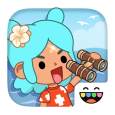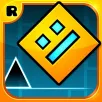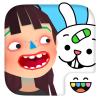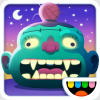
Toca Boca World
In an era where children's entertainment is increasingly complicated by exploitative in-app purchases and misleading content, Toca Boca World emerges as a breath of fresh air. Created by the innovative team at Stockholm's Toca Boca studio, this virtual sandbox offers children a safe, imaginative space to engage in open-ended play. But how does Toca Boca World fare when scrutinized on various fronts, such as gameplay, graphics, and overall user experience? Let's explore.
Gameplay: Freeform Fun
At its core, Toca Boca World is a compilation of several mini-games that meld seamlessly into an expansive universe. Unlike many games in the mobile market aimed at kids, Toca Boca World is refreshingly devoid of competitive goals, scores, or intrusive adverts. Each mini-game provides children with infinite possibilities for imaginative engagement. For instance, Toca Train allows children to drive colorful trains, picking up passengers and cargo, whereas Toca Hair Salon lets them create wacky hairdos on quirky characters.
This freeform structure delights the young players. Children aren't given explicit instructions; instead, they naturally gravitate towards experimenting. The absence of specific objectives might seem confusing to adults accustomed to goal-oriented activities, but the open-ended nature fosters creativity and self-directed play, which is incredibly beneficial for young minds.
Visual Appeal: Vibrant and Varied
One of the game’s standout features is its captivating visual design. The aesthetics vary between mini-games, oscillating between cute, Japanese-inspired designs and more naturalistic Western styles. The graphical variety keeps the user experience fresh and engaging, ensuring that children are continuously drawn into the game's universe.
The visual style is also notable for its inclusivity and diversity. Toca Boca eschews the standard binary gender choices often seen in children's games. Instead, it presents a range of diverse, appealingly weird characters that kids can see themselves in. This inclusive approach is rooted in Scandinavian egalitarianism, subtly imparting values of diversity and acceptance.
Engagement and Interaction
The game is filled with opportunities for tactile interaction, making it especially appealing to younger children who revel in exploring and experiencing their surroundings actively. Simple touch gestures control everything, from serving sushi dishes in Toca Kitchen Sushi to placing items in a shop in Toca Store. Younger children enjoy the repetitive, familiar actions, while older ones might develop strategies to show off their skills.
Toca Boca World’s approach to interactivity is deeply rooted in years of observing how children naturally utilize technology in their play. The game's co-founder, Emil Ovemar, highlights that children don't wait for instructions; they dive right in, experimenting and discovering new ways to interact with the digital world. This natural inclination for freeform play is skillfully integrated into Toca Boca World.
Playtesting Insights
Feedback from playtesting sessions is crucial to the game's success. The developers frequently invite young children to playtest the game, ensuring it meets their desires and expectations. Observations during these sessions, such as children creating mad towers of rice and vegetables in Toca Kitchen Sushi to provoke funny reactions, are taken into account to fine-tune the experience.
The playtesting also reveals that children seek different experiences based on their age. Younger kids are content with exploring and engaging in tactile play, while older kids crave new experiences and challenges. Toca Boca World attempts to cater to both ends of this spectrum, providing a dynamic and enjoyable experience for a broad age range.
Real World Value: Quality Screen Time
According to studies, the quality of screen time is more crucial than merely limiting the minutes. Toca Boca World embraces this philosophy by offering parents and children an opportunity to bond over a shared activity. Elements like Toca Train allow parents to join in the fun, helping younger children navigate the game while enjoying their reactions and decisions.
This game turns screen time into valuable family time, encouraging dialogue and interaction that elevates the experience beyond a solitary activity. By engaging with what their kids are playing, parents can make the most of this digital tool, transforming it into an avenue for meaningful connection and creativity.
Conclusion
Toca Boca World offers a refreshing and innovative approach to digital play for children. Its freeform gameplay, engaging visual appeal, and inclusive character design, combined with insights from extensive playtesting, place it miles ahead of many other games targeting young audiences. It is an excellent alternative in a market where many apps aim to keep children locked into repetitive, goal-oriented loops.
- It may seem confusing to adults used to goal-oriented games;
- Older children might demand more structured challenges.
- Freeform, open-ended gameplay encourages creativity;
- Attractive, inclusive visual design;
- No in-app purchases or intrusive ads;
- Caters to different age groups effectively;
- Turns screen time into a shared family activity.















Leave a comment
Your comment is awaiting moderation. We save your draft here
0 Comments